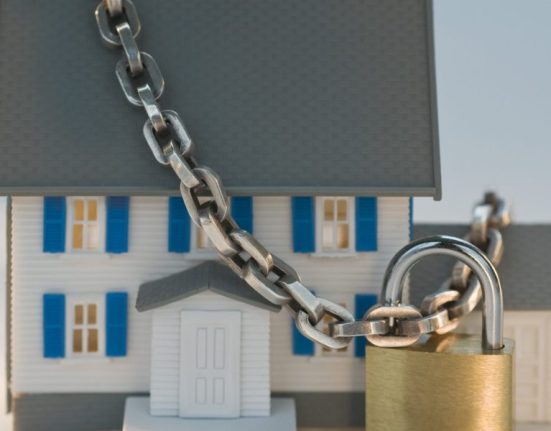The current average interest rate for a fixed-rate, 30-year conforming mortgage loan in the United States is 6.885%, according to the most recent data available from mortgage technology and data company Optimal Blue. Read on to see average rates for different types of mortgages and how the current rates compare with the last reported day prior.
| Type of Mortgage | Current Rate | Rate Last Reported |
|---|---|---|
| 30-year conforming | 6.885% | 6.852% |
| 30-year jumbo | 7.207% | 77.167% |
| 30-year FHA | 6.670% | 6.691% |
| 30-year VA | 6.473% | 6.409% |
| 30-year USDA | 6.697% | 6.686% |
| 15-year conforming | 6.074% | 6.335% |
| 30-year conforming | |
|---|---|
| 6.885% | |
| 6.852% | |
| 30-year jumbo | |
| 7.207% | |
| 77.167% | |
| 30-year FHA | |
| 6.670% | |
| 6.691% | |
| 30-year VA | |
| 6.473% | |
| 6.409% | |
| 30-year USDA | |
| 6.697% | |
| 6.686% | |
| 15-year conforming | |
| 6.074% | |
| 6.335% |
30-year mortgage rates
30-year conforming
The average interest rate, per the most current data available as of this writing, is 6.885%. That’s up from 6.852% the last reported day prior.
30-year jumbo
What exactly is a “jumbo mortgage” or “jumbo loan”? Simply put, it exceeds the maximum amount for a normal (conforming) mortgage. Fannie Mae, Freddie Mac, and the Federal Housing Finance Agency set this maximum.
The average jumbo mortgage rate, per the most current data available as of this writing, is 7.207%. That’s up from 7.167% the last reported day prior.
30-year FHA
The Federal Housing Administration provides mortgage insurance to certain lenders, and the lenders in turn can offer the consumer a better deal on aspects such as being able to qualify for a mortgage, potentially making a smaller down payment, and possibly getting a lower rate.
The average FHA mortgage rate, per the most current data available as of this writing, is 6.670%. That’s down from 6.691% the last reported day prior.
30-year VA
A VA home loan is offered by a private lender, but the Department of Veterans Affairs guarantees part of it (reducing risk for the lender). They are accessible if you’re a U.S. military servicemember, a veteran, or an eligible surviving spouse. Such loans may sometimes allow the purchase of a house with no down payment at all.
The average VA home loan rate, per the most current data available as of this writing, is 6.473%. That’s up from 6.409% the last reported day prior.
30-year USDA
The U.S. Department of Agriculture operates programs to help low-income applicants achieve homeownership. Such loans can help U.S. citizens and eligible noncitizens purchase a home with no down payment. Note that there are stringent requirements to be able to qualify for a USDA home loan, such as income limits and the home being in an eligible rural area.
The average USDA home loan rate, per the most current data available as of this writing, is 6.697%. That’s up from 6.686% the last reported day prior.
15-year mortgage rates
A 15-year mortgage will typically mean higher monthly payments but less interest paid over the life of the loan. The average rate for a 15-year conforming mortgage, per the most current data available as of this writing, is 6.074%. That’s down from 6.335% the last reported day prior.
Why do mortgage rates fluctuate?
While your personal credit score largely determines the mortgage rate you receive, several external factors also play a role. Important considerations include:
- Actions by the Federal Reserve: When the Federal Reserve raises or lowers the federal funds rate, lenders typically adjust their interest rates in response. This strategy helps the Fed control the money supply and influence borrowing costs for both consumers and businesses.
- Inflation levels: Although related, inflation and the Fed’s actions are distinct factors. The Fed raises or lowers rates to control inflation, but lenders may also adjust rates independently to protect their profits when inflation is high.
- General economic conditions: Lenders consider factors like economic growth and housing supply and demand when setting mortgage rates. These are just a couple of the many puzzle pieces that can influence mortgage rate changes.
Learn more: How are mortgage interest rates set by lenders?
Choosing the right mortgage for you
There is no one-size-fits-all mortgage. While most mortgages are conventional, government-backed loans (FHA, VA and USDA home loans) can be a more affordable option if you qualify.
Here are a couple other terms you may encounter in your mortgage research:
- Jumbo mortgages: These aptly named jumbo loans are ideal for purchasing homes that exceed the limits of conforming mortgages, although they may be more expensive in terms of interest paid over the long run.
- Adjustable-rate mortgages (ARMs): ARMs typically offer low initial rates that can increase over time. Consider this option carefully.
The rate data provided in this article reflect averages for fixed-rate mortgages.
If you’re uncomfortable comparison shopping for rates on your own, a mortgage broker can assist you (for a fee) in finding the best mortgage offer for your situation.
How high have mortgage rates been in the past?
While mortgage rates may feel sky-high these days compared to the sub-3% rates some homebuyers scored in 2020 and 2021, what we’re seeing currently isn’t that strange when compared with historical data on mortgage rate averages. Below are a couple charts from the Federal Reserve Economic Data (FRED for short) online database for context.
30-year fixed-rate mortgage historical trends
If you think rates between 6% and 8% today are scary, consider September through November of 1981, which saw the average rate hovering between 18% and 19%, according to FRED.
Check out the FRED 30-year mortgage rate chart:
15-year fixed-rate mortgage historical trends
Rates today on 15-year mortgages, as shown in the Optimal Blue data above, are roughly on par or even slightly lower than what we see during many previous periods. For example, take a look at FRED data for the end of 1994 and beginning of 1995, when rates neared 9%.
See the FRED 15-year mortgage rate chart:
Frequently asked questions
What’s a good mortgage rate in 2024?
With current market conditions, applicants with excellent credit can expect rates between 6% and 8%. Those with lower credit scores, particularly in the low 600s, might see rates above 8%.
Keep in mind that credit score is just one factor affecting your mortgage rate. Other factors include your down payment, location, and loan term.
Learn more: Easy ways to check your credit score.
How does a mortgage rate lock work?
Due to potential daily fluctuations in mortgage rates, a mortgage rate lock (or lock-in) can help secure a favorable rate. These locks usually last 30, 45, or 60 days and can be extended if necessary.
However, rate locks have potential downsides. If rates decrease, you won’t benefit from the lower rates, and extending a lock can be costly if the initial period isn’t long enough.
Additionally, a rate lock doesn’t guarantee your rate won’t change. Factors like changes in your credit score or unexpected appraisal values can still affect your mortgage rate.
Why are interest rate and APR different?
The interest rate is the cost of borrowing, while the APR (annual percentage rate) includes any additional fees, making it higher. Although these terms are distinct for mortgages, they are often used interchangeably for credit card rates.







